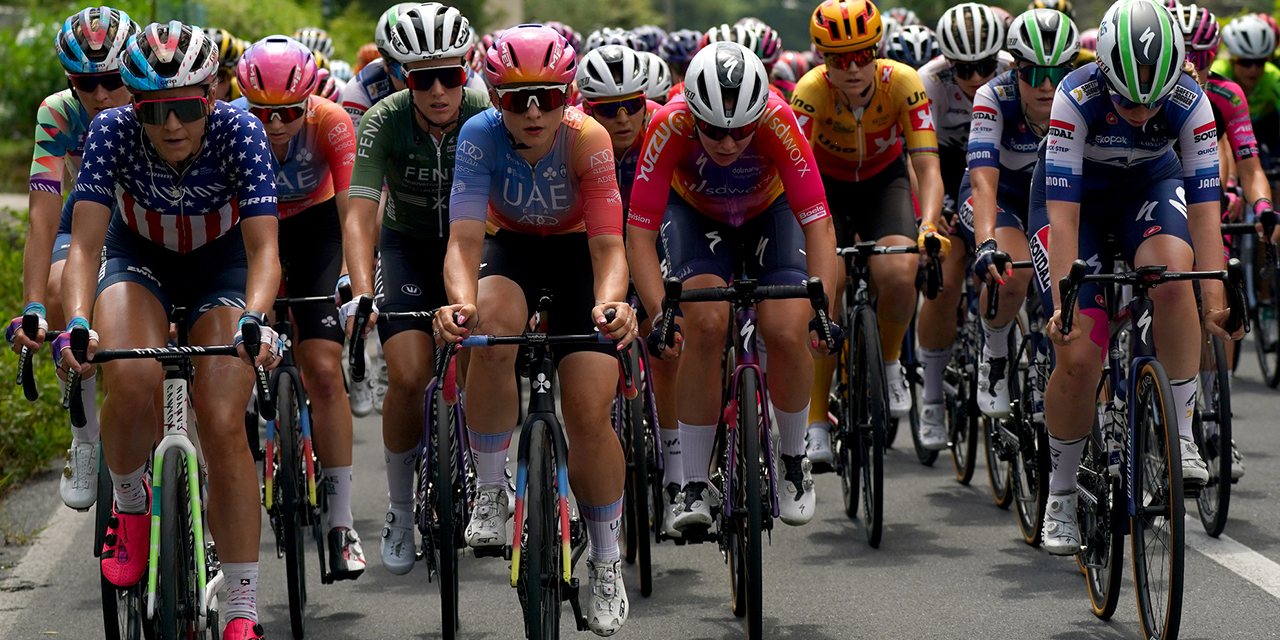As we wait for the start, end, and route of the RCS Sport-branded Giro d’Italia Women 2024 to be announced, let’s take a quick look back at the main venues and locations that have hosted the Corsa Rosa during its more than three-decade-long history.
This is the only women’s event that has traditionally covered 10 days of racing and includes a number of iconic mountain passes. The 1988 Giro pretty much covered the Milan-Rome stretch, a traditional route in the country’s history, with a brief foreign crossing in San Marino. In 1989 the route went from north to south and featured major transfers: the start in Venice was followed by stages in Romagna, Tuscany and Lazio before two fractions in Calabria. The peloton then crossed the Strait of Messina for a stage in Scordia (province of Catania). The last stage was the Campobello di Mazara-Agrigento. Practically reverse route in 1990: after leaving Cosenza on the first day, the bunch headed for Campania, Abruzzo, Umbria and the grand finale in the city of Verona. In 1993, the start was set in Mogliano Veneto and, forty-eight hours later, the girls hit the Cuneo area (at Sampeyre) after a stage in Rogolo, lower Valtellina. After a few more stages around Piedmont and Liguria, the race finished in Lucca.
The 1994 edition began in Arta Terme, in the province of Udine. The famous Treviso hill of Montello hosted the third day of the race while the grand finale was once again held in Tuscany (in Pescia) after transits through Lombardy, Piedmont and Liguria. The Tuscan lands are chosen again the following year, with the start in Grosseto and the finish in Florence, interspersed with mountain stages in Pianezze (Monte Cesen) and San Martino di Castrozza. Rome hosted the Grande Partenza of the 1996. The seventh edition would then pay tribute to the two ‘Campionissimi’ Coppi and Girardengo with the Novi Ligure-Tortona stage before a rapid passage to Milan (individual time trial), another stage in San Martino di Castrozza and the finish in Florence.
Twelve months later it is Abruzzo’s turn, which kicked off the race with the Barrea-Pescasseroli, while the conclusion was hosted by the city of Trieste. That edition, however, is remembered for the arrival at the top of the Zoncolan, tackled for the first time ever by a Giro d’Italia. In 1998, the race started in Cagliari and continued with two more stages in Sardinia. After an evening transfer to Lazio (no rest day), the following stage was held around Civitavecchia. Three days before the finish in Vittorio Veneto, the girls tackled the Passo Pordoi, another legendary climb of Italian cycling. 1999 featured an exciting start from the Mirabilandia amusement park, followed by transits through Marche, Umbria, Tuscany and Piedmont before returning to Emilia-Romagna. The last six stages were all held in Veneto, between the provinces of Verona, Treviso, Belluno, Padua and Vicenza.
Pergine Valsugana was the setting for the start of the 2000 Women’s Giro. Ten days later, the peloton made its way back to Trentino, where the girls reached the summit of Monte Bondone on the eleventh stage before closing the race in Abano Terme. In 2001, the Corsa Rosa spent exactly one week in the south and one in the north: departure from Capo d’Orlando with four more stages in Sicily, then Calabria and Puglia. After the rest day, the peloton moved to Emilia for two thrilling uphill finishes in Vetriolo Terme and on the Nevegal, before reaching Valdobbiadene, in the Prosecco hills, on the last stage. In 2002, the start was held in Pontedera while Gorla Minore hosted the last stage. 2003 featured a departure from Grumo Nevano, in the hinterland of Naples, and two more fractions in Campania, before heading north along the Adriatic coast to close in Venice. In 2004, departure from Pordenone, closure in Milan, with Switzerland (Turtmann-Leukerbad) and the always fascinating Madonna del Ghisallo in between. The following year, the route is drawn between Veneto, Piedmont, Switzerland and Lombardy, while in 2006 the competition starts in Lazio and finishes at Lake Como. In 2007, the start was in Veneto and the finish in Seregno. The following edition started in Mantua and finished in Desio, with Monte Serra in Tuscany turning out to be the key moment of the race.
In 2009, the start in Scarperia and the finish in Grumo Nevano gave us a Giro d’Italia entirely held in the centre-south of the country. In 2010, the absolute protagonist was the Stelvio Pass, which hosted the penultimate stage of a Giro that started from Muggia (Friuli) and ended in Monza. The following year, the route went from Rome to San Francesco al Campo, with a suggestive finish in Ceresole Reale. 2012 went from Naples to Bergamo and included an individual time trial in Rome. In 2013, the start was set in Puglia and the grand finale in Cremona, after a high altitude arrival in San Domenico di Varzo (Piedmont). 2015 saw the only international start in the history of the Corsa Rosa, namely in Ljubljana, followed by the mountain stages in Aprica and San Domenico di Varzo, where that edition came to an end. The following year the start was in Gaiarine and the finish in Verbania after climbing the Mortirolo from Mazzo in Valtellina on the sixth day. In 2017, start from Aquileia and finish in Torre del Greco, while in 2018 (from Verbania to Cividale del Friuli) the race was characterised by the climbs of the Diga di Campo Moro and Monte Zoncolan. Further major climbs were tackled twelve months later, with the arrivals in Piedicavallo, Laghi di Cancano and Montasio, after kicking-off the event in Cassano Spinola and finishing in Udine. In 2020, the women’s Giro was compressed between Tuscany and Puglia, while the following year (from Fossano to Cormons) our girls climbed Prato Nevoso, Cascate del Toce and Matajur. Sardinia has been an utmost protagonist of the last two editions, hosting the departure in 2022 (with Padua hosting the grand finale) and the conclusion in 2023 (the start being in Tuscany).




















